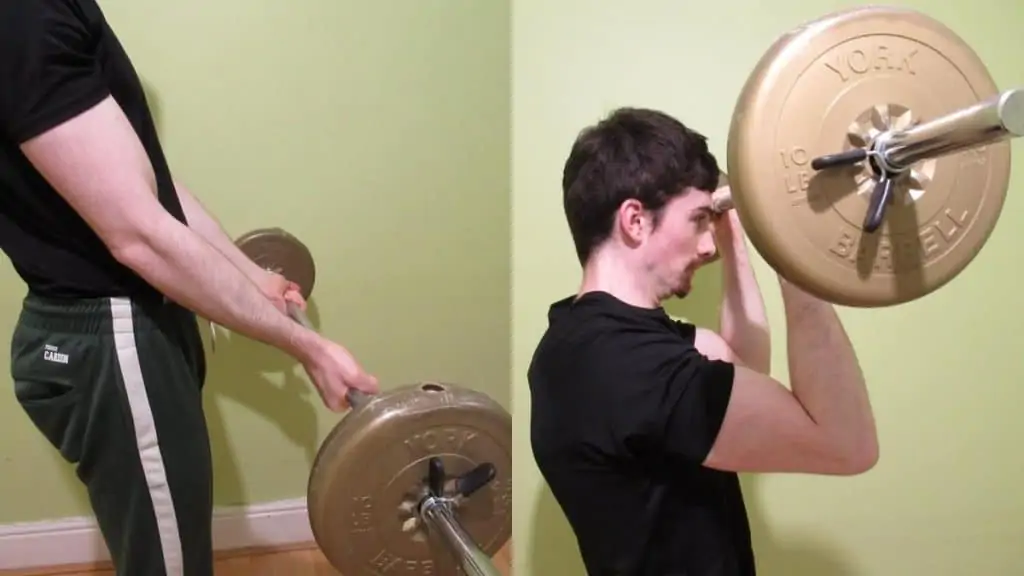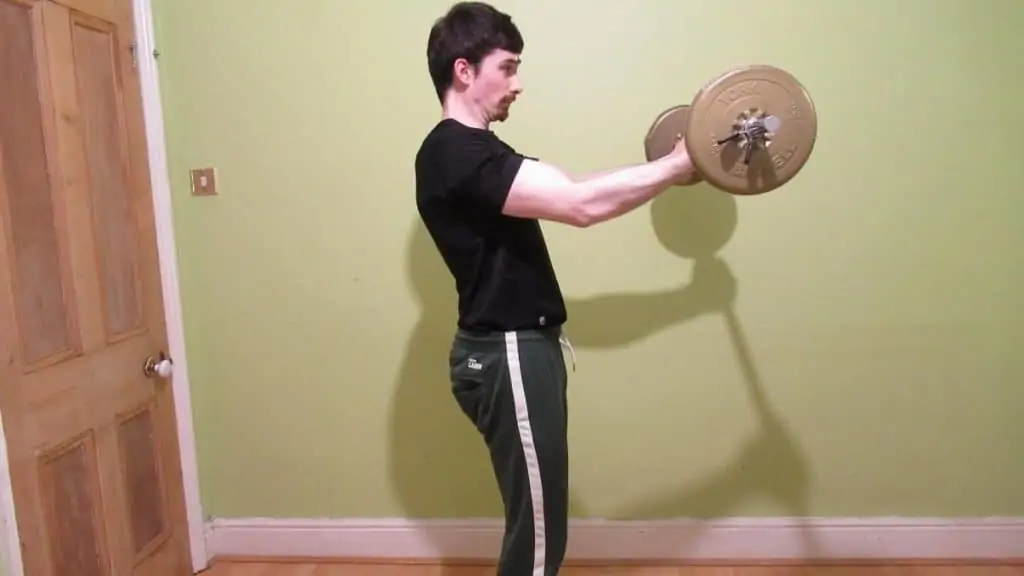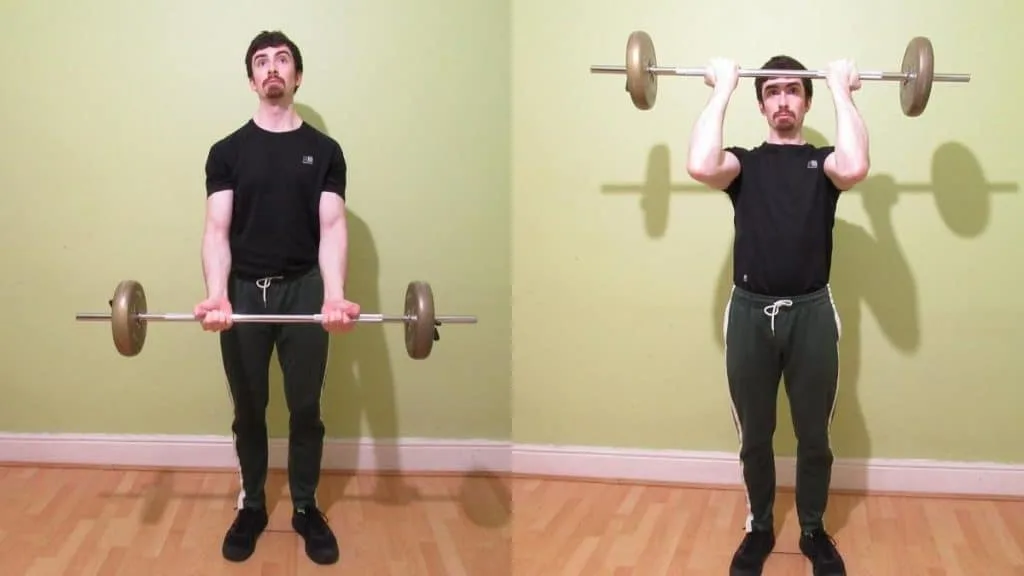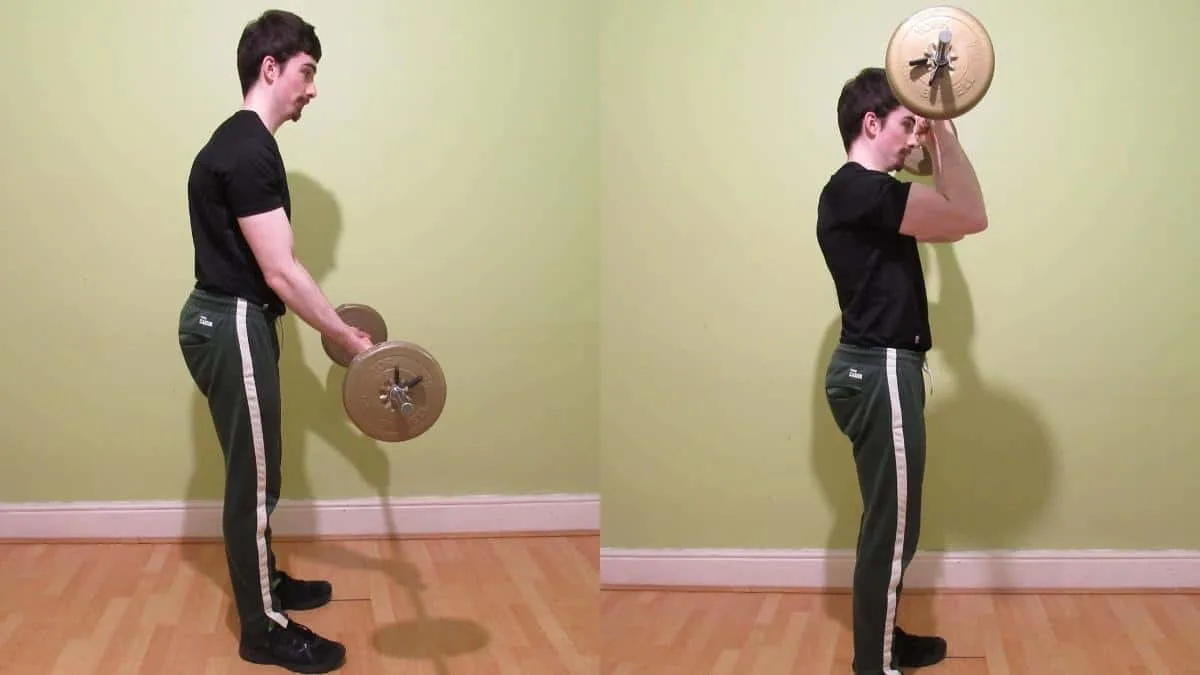As you might already know, the biceps brachii does more than just elbow flexion and forearm supination; they also assist the anterior deltoids with shoulder flexion.
So to maximize your bicep stimulation—in theory, at least—you need to do at least one curling movement that trains shoulder flexion. Forehead curls, which were invented by American bodybuilder Dave Draper, are the best example of such an exercise.
Forehead curl exercise details
- Main Muscles: Biceps brachii
- Secondary Muscles: Brachioradialis, brachialis, forearm flexors
- Exercise Type: Strength
- Exercise Mechanics: Isolation
- Difficulty Level: Intermediate
- Equipment Needed: Barbell, weight plates
How to do Dave Draper forehead curls
- Load a relatively light amount of weight onto a barbell.
- Grab the bar with a shoulder-width underhand grip.
- Curl the weight toward your forehead by flexing your biceps and raising your shoulders.
- Stop just before the bar touches your forehead.
- Lower the weight under control with your biceps until you reach full elbow extension.
- Perform 3-5 sets of 6-15 reps in total.
Pros and cons of forehead curls
Dave Draper forehead curls are a very quirky bicep exercise that definitely has their place for some lifters. This section will help you decide whether or not the movement is right for you.
Pro: Better bicep contraction

Since the biceps assist the deltoids with shoulder flexion, you can create a more intense peak contraction by raising your shoulders forward as you reach the top of a curl.
Curling the bar to your forehead forces your biceps into a maximal contraction that otherwise wouldn’t be possible to achieve with standard curls. So if you want to improve your mind-muscle connection, the forehead curl is one of the most effective exercises for the job.
Forehead curls are superior to doing high curls with dumbbells because the majority of the tension stays on your biceps and not your shoulders. Most of the time that is.
While the carryover effects of performing a forehead curl can definitely help you to feel your biceps working more during your other exercises, the movement relies on you having a decent mind-muscle connection in the first place. If you don’t, then other muscle groups could start to take over the reins from your biceps.
Con: Shoulders might give out

It’s completely normal to feel your front delts working during forehead curls. However, trouble arises when your shoulders give out before your biceps because this means that the true target muscle of the exercise will be left understimulated.
Therefore, you really have to focus on using your biceps as much as possible when you’re lifting the weight. The initial phase of the rep should be a pure bicep movement; you only bring your shoulders forward during the final portion of the lifting motion to intensify the peak contraction.
If, after using strict form, you still feel more deltoid activation than bicep activation, then you can simply reduce the amount of shoulder flexion. So rather than bringing the bar to your forehead, you’ll just raise it slightly higher than usual. In practice, this can be as simple as curling the bar to your upper chest rather than your head.
Sometimes less is more. A little bit of shoulder movement goes a long way toward making the biceps work harder. And besides, past a certain point, the deltoids are bound to take over whether you want them to or not because raising the shoulders is their primary function. The biceps only assist with shoulder flexion, so keep the forward movement within reason if you want to keep the tension on your biceps.
Con: Need to lift lighter

You can’t front raise as much weight as you can curl. As such, you need to lift lighter on forehead curls than on regular curls. This naturally means that your biceps are getting overloaded with less resistance.
But this may not actually be a bad thing seeing as forehead curls create a stronger bicep contraction and thus arguably generate more tension than lateral bicep curls and other such exercises.
Moreover, lifting a lighter weight can encourage you to use the proper form. After all, if there’s one exercise where ego lifting does not work, it’s the forehead curl. By focusing on using the correct technique, you can really hone in on your biceps and fulfill all of their main functions with this one exercise.
The verdict: Should you do forehead curls or not?

Dave Draper forehead curls will help to improve your mind-muscle connection if you perform them with strict technique. As such, they’re a great training drill to do if you struggle to feel your biceps working enough during other exercises.
Obviously, the forehead curl is typically done by curling the bar toward your forehead. However, if this approach causes your shoulders to fatigue prematurely, then you can simply curl the bar to your upper chest or collarbone area instead. This way, you’ll still get the improved bicep contraction but without the intense shoulder burn that scares many lifters off from doing this underrated exercise.

